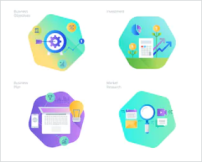ANALYSIS OF MECHANICAL PROPERTIES OF CuZn35 WITH HEAT TREATMENT USING MACHINE LEARNING & TAGUCHI OPTIMIZATION
Abstract
Keywords
Full Text:
PDFReferences
Istiqlaliyah, H. and Rhohman, F. (2016), “Pengaruh Variasi Temperatur Annealing Terhadap Kekerasan Sambungan Baja ST 37,” Jurnal Teknik Mesin, Vol. 5, No. 4, pp. 137–142.
Khan, N.Z., Khan, A., Shakoor, A. and Azam, K. (2015), “Manufacturing Defects of Brass Products and Suggested Remedies,” International Journal of Innovative Science, Engineering & Technology, Vol. 2 Issue 9, pp. 497-514.
Koilraj, M., Sundareswaran, V., Vijayan, S., et al. (2012), “Friction Stir Welding of Dissimilar Aluminum Alloys AA2219 to AA5083-Optimization of Process Parameters Using Taguchi Technique,” Materials & Design, Vol. 42, pp. 1–7.
Kotsiantis, S.B., Zaharakis, I. and Pintelas, P. (2007), “Supervised machine learning: A review of classification techniques,” Emerging Artificial Intelligence Applications in Computer Engineering, Vol. 160, No. 1, pp. 3–24.
Matyunin, V.M., Abusaif, N. and Marchenkov, A.Y. (2019), “Influence of grains and grain boundaries on hardness values,” in Journal of Physics: Conference Series, Vol. 1399, No. 4, 044002.
Montgomery, D. C. (2001), “Design and Analysis of Experiments. 8-th Edition”, John Wiley & Sons, USA.
Shaw, L.L., Villegas, J., Huang, J.-Y. and Chen, S. (2008), “Strengthening via deformation twinning in a nickel alloy,” Materials Science and Engineering: A, Vol. 480, No. 1–2, pp. 75–83.
DOI: http://dx.doi.org/10.12962%2Fj2746279X.v3i1.13760
Refbacks
- There are currently no refbacks.

This work is licensed under a Creative Commons Attribution 3.0 License.


